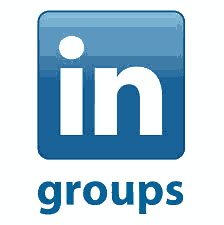
LinkedIn Groups provide an opportunity for you to network with like-minded professionals in your industry, potential customers, prospects and even existing clients. Groups can be used to brand yourself as a personal but professional authority in your niche.
You can join up to fifty groups on LinkedIn Groups, but typically you should only join a handful of these groups. The goal is to actively participate, and by selecting only the targeted, most relevant groups you will be able to keep up. A sound strategy is to sign up for each relevant group that you see, then review your groups over time and unsubscribe from the ones that don’t have much activity or are not giving a worthwhile response. Always find groups where your target audience is spending time, and where you can contribute value.
Comment
The easiest way to get involved is to read and comment. Similar to forums and blogs, offer value to the other members with your comments – not just one-liners. Be yourself, be understandable and be helpful. Read other posts and get in tune with the conversations to determine how you can best help.
Spread the News
LinkedIn Groups let you share link to relevant articles and posts online. When you find a useful news article, blog post or a website that you think will provide value to other members, share it with the group and let them leave feedback. This can be a great way to get a discussion started. Each group is different and each group prefers different types of content, so pay attention to how people respond and adjust your posting frequency and the type of information you share accordingly.
Announce Events
Some LinkedIn groups allow you to make announcements about upcoming events that you are hosting. If you’re doing a Webinar or an offline event, share it with the relevant groups to let everyone know. Make sure that it is applicable to the group, and something that they would be interested in, or it will just be marked as SPAM. Self-promotion is frowned up and should be done tactfully.
Start Discussions
Sharing ideas is one of the key reasons for LinkedIn groups. If you have an idea that might be worth sharing, and might be able to open up a conversation, go ahead and start a discussion. You can also ask questions to get other members’ opinions and ideas. Take the time to get to know your group and get a sense of what subjects are of interest to members.
Conduct Polls
There is a feature of LinkedIn Groups that lets you conduct a survey or poll. It allows other members to vote easily with a single click, and optionally leave comments and feedback. This can be an effective tool for getting yourself known in the group, initiating interesting conversations, and establishing a reputation as a group authority.
Group Etiquette
Like any online community, LinkedIn groups have rules of etiquette to follow. Never SPAM to a group, or shamelessly self-promote. This might seem obvious, but it’s easy to miss the point when you have several consecutive posts with no response. If your posts aren’t getting a response, they might be too narrowly focused or too self-promoting.
Self-promotion doesn’t fly in LinkedIn Groups; people don’t use groups to be advertised to, they use them to learn, network, talk, share their opinions and meet other individuals. This tactic to get backlinks or clicks is not only ineffective, but it can hurt you in the long run.
And of course, don’t start fights. If a conversation becomes heated or negative, quietly step away from it or take the conversation to private email. Arguing in a professional context doesn’t do anything positive for your reputation or brand name. As a general rule, avoid negative comments altogether.
Be Proactive
Also, make a point to be proactive with LinkedIn Groups. Don’t just wait for the daily newsletter to come out and respond to the existing posts. Get involved, get engaged, and provide value. People will start to associate you with the groups they love, and see you as an authority in the industry they are involved with.



